Original Owner: A Navy sailor returns home to a new Datsun 240Z
Welcome to Original Owner, a series showcasing—you guessed it—people who bought a classic car new and still own it. The cars don’t need to be factory-original, just still in the hands of the first owner and still getting driven. —Ed.

Twenty-three-year-old George Carter loved driving his 1971 Fiat 124 Spider. He relished its rev-happy four-cylinder engine, five-speed stick, and dashing Pininfarina design. He’d bought it new but soon fell for a something else that had been tempting him since arriving in early 1970: the Datsun 240Z.
The Z became the sensation of the sports car world, beloved for its powerful inline-six engine, fastback coupe body, and well-finished interior. All of that came with an irresistibly reasonable price—about $3600, or $27,000 today—that sent sales zooming.
Carter’s Fiat still had that new-car smell when he negotiated a trade-in for a 1973 240Z from Morris Motors in Charleston, South Carolina. It was December 1972, and even three years after the 240Z debuted, Carter faced a six-month wait for delivery.
He didn’t mind the delay, though, as he had plans to be out of the country for a few months. Or rather, the U.S. Navy had plans for him. Carter was serving as a Sonar Technician First Class aboard the USS Blakely (DE 1072), a newly commissioned destroyer home-ported in Charleston, some 1300 miles from Carter’s home near St. Paul, Minnesota. The Blakely was scheduled to sail for Vietnam in late fall for its first tour in a combat zone.
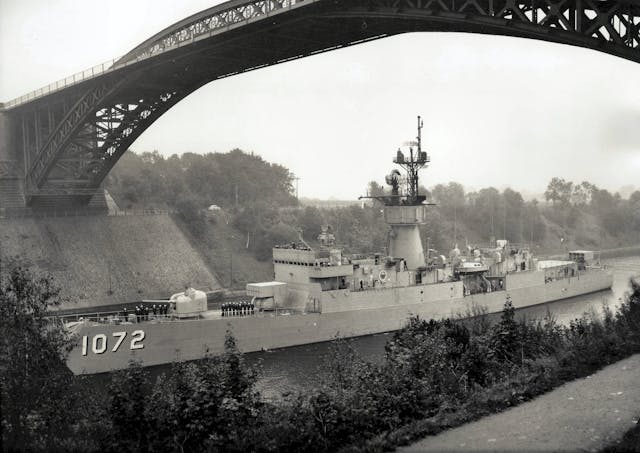
The ship left Charleston for the western Pacific on December 1, 1972, and a final leg from the Philippines to Vietnam began on January 7, 1973. A blessing for all aboard, there would be no combat. Peace talks resumed during their voyage and on January 27, the United States and North Vietnam signed the Paris Peace Accords to end the war.
The Blakely was back in Charleston in late March, and Carter took delivery of his 240Z in May. One of his several cross-country trips while on leave was to visit home in Minnesota.
The car served as his daily for many years as well as a weekend autocrosser. Today, following an extensive freshening, it’s strictly a pleasure driver. Notably, Carter’s ’73 240Z was one of the rare ones to leave the dealership with a five-speed manual transmission. Wait a second, didn’t the five-speed debut with the 1975–1978 280Z? Well, some got it a bit earlier.

Datsun 240Z: Factory basics
Few cars have reshaped a well established market as spectacularly as the Datsun 240Z did with sports cars 54 years ago. Datsun had been part of that establishment with its two-seat roadster, called Fairlady in Japan and simply “Sports” in America, since 1963. The Sports 1600 and Sports 2000 ended in 1970, the latter powered by a 135-hp 2.0-liter OHC four.
Big change was afoot. Nissan took a sharp turn away from the roadster with a Jaguar E-Type-inspired GT coupe. Yutaka Katayama, president of Nissan America and affectionally known to Nissan buffs as “Mr. K”, had suggested that such a car would have wider appeal than a roadster. Toyota’s ultra-limited-production 1967 2000 GT was the right idea but at the wrong price, so Nissan designer Yoshihiko Matsuo took up the challenge to develop a similar kind of mass-produced car.
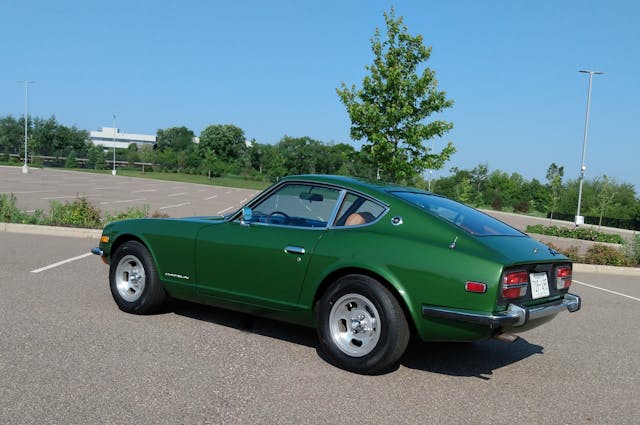
The coupe that emerged (model code S30) was called Fairlady Z in Japan, getting its 240Z name in the U.S., its primary target market, from an iron-block, aluminum-head 2.4-liter SOHC inline-six-cylinder engine. The modern six gave 151 hp at 5600 rpm and 146 lb-ft of torque at 4400 rpm (about 135 net hp.) By comparison, the Triumph TR6 roadster mustered 104 hp from its 2.5-liter OHV six, and Triumph’s Spitfire-based GT6 coupe had a 95-hp 2.0-liter inline-six.

Everything else in the price neighborhood had a four-cylinder engine, and no car in the category could touch the 240Z’s performance. In its June 1970 road test, Car and Driver recorded 0-60 in 7.8 seconds (two seconds quicker than the TR6) and the quarter mile in 16.1 sec. at 87 mph. Road & Track’s numbers, while not quite as quick, were still better than other cars in the price class.
The 240Z carried speed through the curves, too, thanks to four-wheel independent suspension via MacPherson struts in front and Chapman struts out back, as well as rack-and-pinion steering. Two weak points were its choppy ride and diminished braking performance amid road spray in the rain.
Screaming bargain (and race winner)
That $3526 list price (about $150 more than the TR6) made the 240Z an alluring deal, even if dealers padded the price in response to high demand. Also new to the market, Porsche’s 914, at $3600, offered a mere 80 hp from its air-cooled Volkswagen four-cylinder engine.
Like the Datsun Sports 2000 before it, the 240Z became a racing champ. With factory backing, Brock Racing Enterprises, founded by designer and racer Pete Brock, clinched SCCA C-Production National Championships in 1970 and 1971. Connecticut-based Bob Sharp repeated the feat for 1972-73. Farther afield, a 240Z won the grueling East African Safari rally in 1973.

As it had for many British sports cars, the U.S. became the biggest market for the 240Z, taking 90 percent of the approximately 165,000 built through 1973. Canada took 11,200 (7 percent).
To keep up with more stringent emissions regulations, an engine displacement bump to 2.6 liters turned the 240Z into the 260Z for 1974. The final S30, the 1975-1978 280Z, did a better job balancing performance and emissions with a fuel-injected 2.8-liter version and an available five-speed. By the end of the S30’s run, about 520,000 had been built, most sold in the U.S.
George Carter’s car
Many 240Z owners saw their new sports car as a perfect canvas for Day Two modifications for improved performance and handling, and Datsun dealers and the aftermarket eagerly obliged with plenty of add-on parts. Carter ordered several genuine Datsun upgrades through the dealer including, yes, a five-speed manual transmission to replace the Z’s four-speed. Here’s how he got it:
“I was all about sports cars back then,” Carter tells Hagerty, adding that he planned to autocross the car. “An article I read in Road & Track recommended adding heavy-duty front and rear anti-roll bars, headers, and the five-speed. The only way to get that transmission was to order it through what was then called the Datsun Competition Department.”
Carter ordered all those items, plus the slotted “mag” wheels. All appear on his original bill of sale. He later added the BRE-style front spoiler.

“A lot of people retrofit a five-speed from the later 280Z or ZX, but I was able to order this in 1973. It turned out to be an ultra-rare transmission. Very few 240Zs have this.”
Carter’s total purchase price came to $5141.75. “That was a lot back then. I remember being chided about paying over $5000 for a car,” he recalls. List price for the car $4235. The five-speed was $400; mag wheels were $200; headers were $200; and the anti-roll bars cost $100. Those were the installed prices.
His initial color choice had been Silver Metallic, but he became smitten with Green Metallic when he spotted a Z in that hue in the dealer’s service area just before ordering his car. “The earlier green was more of a British racing green, but in 1972 they changed it to this. That’s what they had 1973.”
The Datsun dealer gave Carter $1850 for his ’71 Fiat Spider, half what he paid new. He added $2000 cash to the transaction, leaving a loan balance of $1291.75.
Carter recalls one sour note on delivery.
“The Road & Track article claimed that Datsun Competition Parts installed by the dealer would be covered under the new-car warranty, but that turned out not to be the case,” he says. “I recall them telling me something to the effect that ‘Road & Track magazine does not set Datsun warranty terms.’ They even gave me a piece of their letterhead containing that wording, along with a large red sticker centered on it that said, ‘No Warranty.’ The sticker had been attached to the transmission when received from Datsun. I have unfortunately lost that piece of paper over the years.”
Life with the Z
Carter knew the 240Z was rust-prone and would be especially vulnerable in Minnesota winters. When he moved back from Charleston in 1974, he had the car under-coated with rustproofing.
“It didn’t stop all the rust, but there wasn’t much to repair before the car was repainted in the Eighties,” he says.
After two years of driving, Carter decided to store the car over winters. When he bought a Camaro in 1995 and then, later, a Corvette, those cars took up his garage, and the Z spent more time in storage elsewhere. As it turned 25 years old, Carter’s Z got its own two-page feature in Nissan USA’s service news magazine, Tech Talk, thanks to his brother, who was the editor.
“The last time it was in storage for over 10 years,” he says. “I took it out about five years ago and revived it—gave it new brakes, clutch, struts, ball joints, anti-roll bar links, fuel pump, and tires and replaced all the rubber components.”
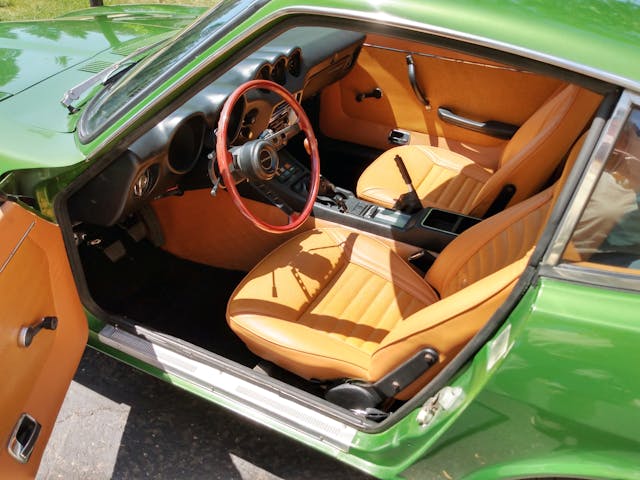
This past winter, Carter treated his classic Z to new upholstery and carpeting.
“The seats were the only things inside that really showed wear. My dash is original. They usually cracked in sunnier climates. Mine didn’t sit outside, and it has one tiny little crack.”
The car currently stays in Carter’s home garage, while his and his wife’s daily drivers are parked outside.
George’s 240Z memories:
Hagerty: How much did you drive the Z when you got it?
GC: All the time. It was my daily driver. And of course, being on a ship at the time, I just needed that outlet, to get out by myself. I drove it cross-country several times. I visited my parents in Minnesota. And I also drove it from Minnesota out to Rapid City, South Dakota. I put a lot of miles on it when it was new.

Hagerty: Was it reliable?
GC: I never had any real trouble with it, but the ’73s had all that smog stuff, and they used a different carburetor than the ’70-’72. Especially being in a hot climate, like Charleston, they had vapor lock problems. You’d take it to the dealer, and they’d install some kit that was supposed to fix the problem. But none of their fixes ever worked well. They even had a hood scoop available if all else failed. It kind of followed the contours of the center hood bulge, with openings on the side. It wasn’t that obtrusive, but I didn’t want it.
Hagerty: Did anything finally work?
GC: The only real fix was to retrofit ’72 carburetors, which I did when I got out of the Navy in 1974 and was back in the Twin Cities. I advertised in the local paper that I was looking for 1972 carburetors. A guy contacted me immediately. He had a set because he was putting triple Webers on his Z. I bought them, and they’ve been on ever since. The ’72 carburetors have a different look. They’re a copy of the British SU carburetor, built by Hitachi. They’re known as ‘round tops,’ while the ’73 240Z and the ’74 260Z used ‘flat tops.’
Hagerty: How was the five-speed on the street?
GC: It worked fine. But it had a higher first gear than the four-speed, which made it a little more challenging pulling away from a stop.
Hagerty: Was the repaint the original color?
GC: No, it’s a similar Corvette color called Elkhart Green used in 1972 and 1973. A friend painted the car. We stripped the car down to bare metal. My friend sprayed on lacquer paint, and then we hand-rubbed it. It has stood up well after 40 years.

Hagerty: What are your best memories with the 240Z?
GC: I would say some of my cross-country trips were really enjoyable. I autocrossed it quite a bit in my younger days, and that was always a lot of fun.
Hagerty: Does the Z still get attention after 50 years?
GC: Occasionally I’ll have somebody honking their horn or giving a thumbs-up. But not everybody knows what it is. Here in the Midwest, they weren’t nearly as common as they were on the coasts. My next-door neighbor asked, ‘What is it?’ He was just young enough that he’d never seen one before.
Hagerty: Was there a point that you thought you’d be keeping this car forever?
GC: Yes, when it was new! As the years went on, there were times I thought, I’m not using that car, I should just sell it. My wife doesn’t want me to sell it, though. She always says, ‘You’ve brought it this far.’ My Camaro and Corvette are gone, but I still have the Z.

__
Car: 1973 Datsun 240Z
Owner: George Carter
Home: St. Paul, Minnesota
Delivery date: May, 1973
Miles on car: ~70,000
***
Are you the original owner of a classic car or do you know someone who is? Send us a photo and a bit of background at editor@hagerty.com — you might get featured in our next installment!
Check out the Hagerty Media homepage so you don’t miss a single story, or better yet, bookmark it. To get our best stories delivered right to your inbox, subscribe to our newsletters.
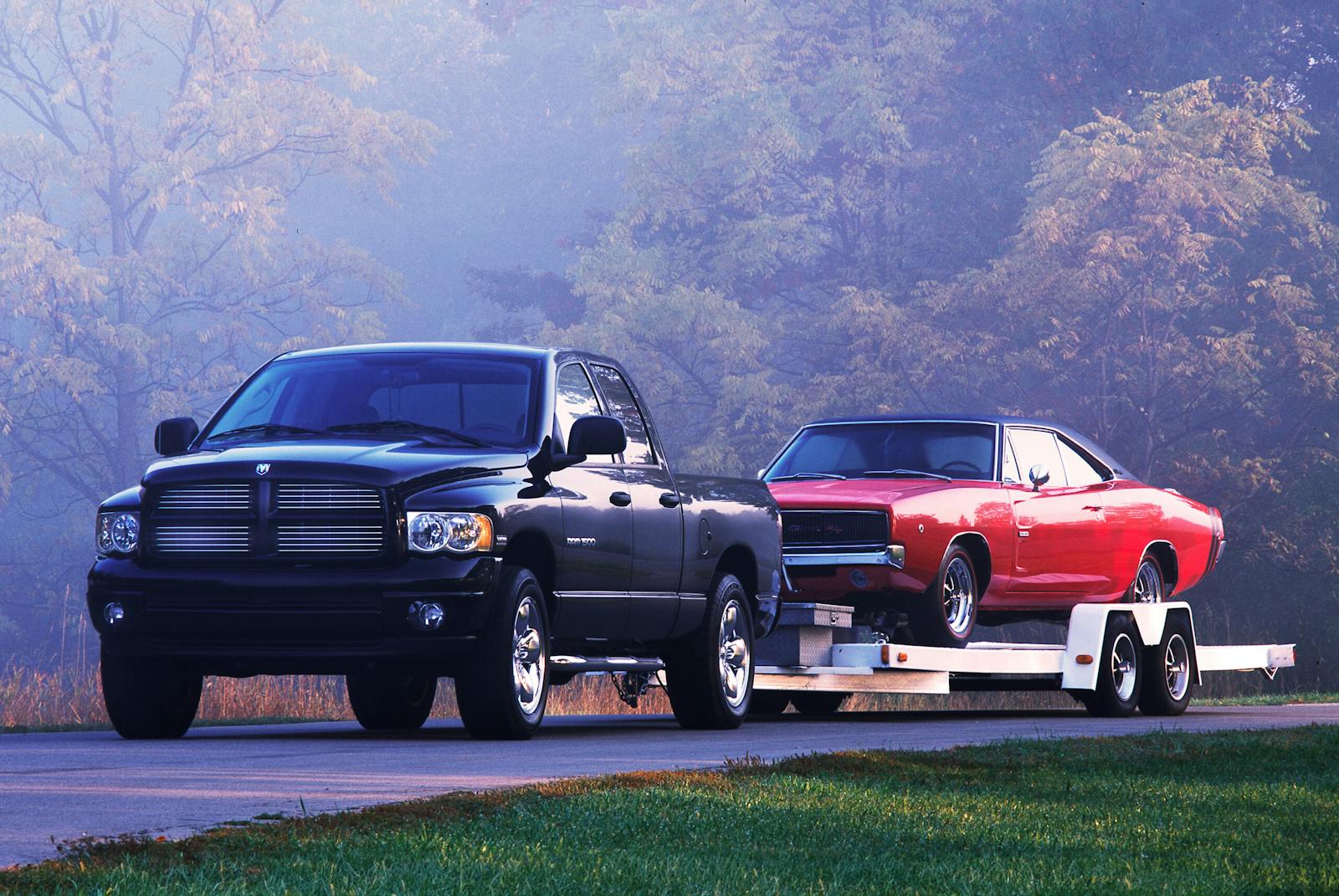
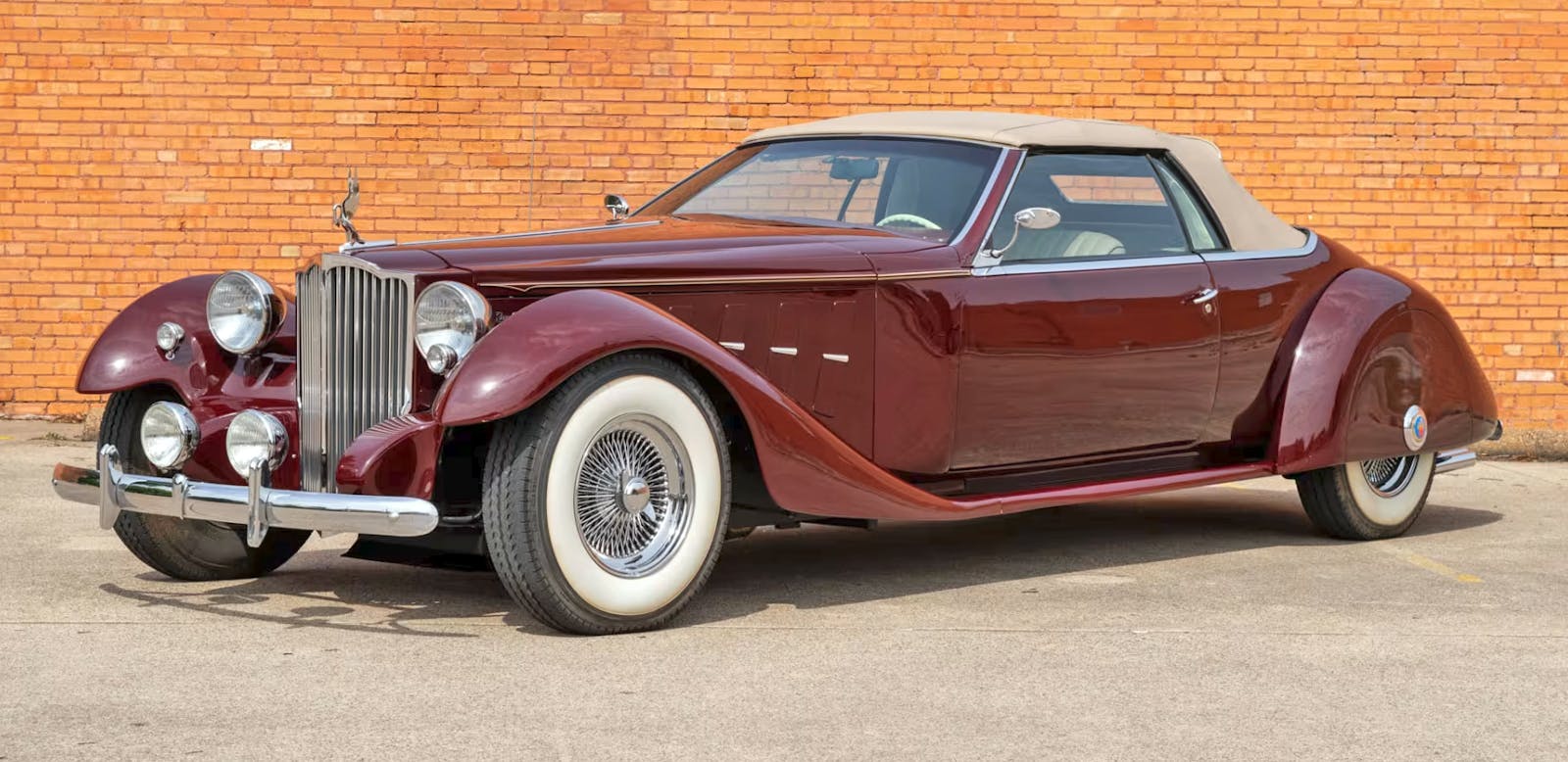
A 1971 240Z was my first experience in driving a “sports car” in the spring of ’73. Up until that time my only experience was driving American full and mid size cars. I remember how confidently the 240Z handled back roads, curves, turns, and didn’t wallow around.
At the time it didn’t ignite any sparks as I was more into fast accelerating cars. In fact I was more enamored with the living room ride of most American stuff then. Today however, I appreciate handling as much as quick acceleration. Seems there are really no good riding cars anymore anyhow.
An officer on the ship I served on in WestPac ordered a 1970 240Z which was waiting on him when we arrived back in Mayport, Fl Dec 1970. I loved the looks of that car and was going to buy one myself. My dad accompanied me to the local dealer that sold them. He talked me out of buying one because he questioned the parts available for these cars, especially for a small dealership. After careful consideration I “Settled” for a CUDA AAR. I was smarter than I realized.
George, loved the story of your journey with the 240Z! Brings back memories when I was in Jr. High, I had a teacher who had an 240Z, orange–not sure the year. But I always thought, man, that’s a cool car!
In the Summer of 1970, I lucked into my dream job. It was a $1.85 an hour job at Arthur’s Auto Parts in Hempstead, NY.
I would drive a 1955 Chevy 150 Station Wagon, or a 1970 Datsun Pick up to various Tri-State Datsun Dealerships, and drive off with a brand new 240 Z. The original Z Cars did not come with A/C. However, in a ploy to jack up the price even more, A/C became a mandatory option. My job was to drive them back to Arthur’s, where they had an A/C shop in the deep end of the store.
From July to September, 1970, I must have jockeyed 50 Zs back and forth from Dealership to the shop and back. Two things I remember about the 240Z were the speedometer in them started at 20 mph(lame) and, at speeds over 90 mph the front end tended to get real freakin’ light. Of course, that was remedied with the addition of the front spoiler. What a Summer!!!
PS: Though I never owned a Z of any iteration, I have owned a dozen Sports Cars ever since. This includes my current 1990 and 2008 Miata’s.
I had a 1972 240 Z I bought in about 1985 and I loved the car . I replaced the finicky carks with an aluminum intake and 390 Holly +Headers . I installed Turn 6 springs and solid bushings in the steering. coupled this with Konni adjustable shocks and the car handled beautifully. I was driving on I- 75 doing about 75 MPH thru Gorgia one night in 1989 when a Porcha and Camaro Blew buy me doing somewhat over a 100 MPH. I down shifted and caught up with them doing about 120 MPH. We went along for a while at that speed and then I thought ,I am in Gorgia . I they catch me at this speed ,they will throw me under the jail. I backed off and let the other cars confine out of sight. I loved it while it lasted. Sold the Z in 1992 as I was short of money while building on to my house. I would have loved to keep the car.
Just prior to my return from Vietnam in March ’70, I read the first report on the Z in Sports Car Graphic in the PX at Vinh Long. Knew I had to have one. Bought my 2/70 240Z HLS30-01769 while on homecoming leave in Chattanooga. They didn’t have any yet, so I was at the dealer’s door when they opened every day for about 10 days. Told them I wanted the first one off the truck, no matter the color. Dealer said they had multiple deposits. I was there every morning with the cash I’d saved in Vietnam, so they weren’t going to say no to a cash sale at sticker price. Safari Gold #920. 153K miles now. OE radio (AM). Never any serious issues. No body rust at all…always stationed in the South and garaged. Replaced water pump, hoses, belts, antenna motor, brakes, clutch, alternator, regulator. shocks. Drive it 5-6 days/week. No mods except slot mags when new. Recently took a 3500-mile road trip. Had to tighten fan belt during return. Temps & pressures right on spec. Gets about 22 mpg when I’m running around 85 on I-95. Had lots of other cars, but this Z is a keeper. Hey! 53 years…runs like new, looks like new. Stayin’ in the family.
I had a 260Z, loved that car. It was a ball to drive.
I have a friend who bought a ’73 240-Z new. I drove him to pick it up. He still has it, it’s had its quarter panels fixed once due to rust. He has it housed in a heated garage, in northern Wisconsin, not far from Minnesota where the subject of the article was from. Fun little car, but underpowered compared to the muscle cars most of us drove in the early 70s.
Hagerty was the First and Only Classic Car Insurance Co. that would offer Agreed Value Policies to owners of Datsun 240Z’s starting in 1997. I personally contacted three other Classic Car Insurance Co.’s, one of which I had other Classic Cars insured with. None of them were interested – I believe that was because, at the time 240Z’s did not hold much market value.
Hagerty worked with me and the Internet Z Car Club to insure a small group of Datsun 240Z’s that were the Original Owners. The goal was to have an Agreed Value high enough to assure that our prize possession would not be “Totaled” because of a minor fender bender; due to then extremely low ACV’s in the used car market. Today we have found just under 200 Original Owners of 240Z’s.
Carl, sounds good, but I had my one-owner HLS303547 inured with J C Taylor since the 1980s. Just this week, I moved it to Hagerty after 50-years with JCT because of service (and attitude) issues! My first car with JCT was a ’53 Caddie 62 coupe in ’73, btw. I always had other cars with stated-value insurance on that policy, which might have helped. Also, my car was by 1988 a ground-up restoration, and the subject for my book HOW TO RESTORE YOUR DATSUN Z-CAR (CA Bill’s Automotive Handbooks, Tucson AZ, 1990),
NISSAN USA repurchased the Z in 1995 for a display car when Autoweek prematurely let the cat out of the bag about their series of restored 240’s to be sold by their dealers and warranted as new cars; the 300ZX had just been cancelled. Eventually it was sold to a collector in Brentwood CA. I’ve had two since, a ’72 builder that was stolen (JCT paid $3000.00 for it in about 2000) and my current ’71 slight restomod (not only 280Z 5-speed, but L-28 also) which has about 400-miles on it yet. Just my experience… Wick
Woops, ‘inured’ should be ‘insured’, of course. And my ’71 Z is insured for ten-times the ’72 valuation; finally, some respect!!
Back in HS about 1973, a lot of kids liked the Z. Not me; I was one who liked convertibles, and I thought a 2-seater with a steel roof was pointless – and I pretty much still think that. Fiat problems or not, I would have kept the 124 Spider (a really fun car to drive, by the way). It, and the TR6, were my favorite sports cars back then.
Datsun did make the 2000 roadster which I currently own and yeah, the rag top is a blast coupled with the 4cyl and a 5 speed.
I’ve had two 240s one of the 260Z and a 280Z best cars when you’re young so I thought.
I’ve had the pleasure of owning 8 Datsun Z cars over the years. Everything from a 1970 to a 1978.
The sad part of this article is the price in today’s money. In 1973, a $5000 purchase represented 100% of someone’s wages if they worked 40 hours a week at the federal minimum wage. That equates to $16,000 today. However a new Nissan Z is $60,000.
Purchased new 1975 280Z one month after getting married. Traded in 1971 Vega, piece of junk. Z was best car ever had. Sold it in 11/22 due getting harder and harder to get out of. Drove it 260,000 miles on original engine and transmission. Used as sales vehicle for 3 years averaging 40,000 miles a year. Already had 120,000 miles when started that job. Changed oil every 3000 miles. Miss it, new owner upgrading everything and happy with it.
Many years ago when I was attending one of my many Nissan/Datsun factory training classes, (this one for manual transmission) I learned that before being available on the S30 models, Nissan had the 5 speed fitted the the 620 pick up trucks to test their durability. Having owned a 1977 620 King Cab with a 5 speed, I will attest to the strength and ruggedness of that gearbox.
I ruined my original-owner 240Z by doing the top-to-bottom restoration on it; then I was afraid to drive the thing with any enthusiasm for fear of damage, and only enjoyed showing it (inevitably vs. stuff like Gull-Wing Mercedes, over-restored Jags, and droves of Porsches), which wasn’t enough. Now I’ve done the same thing to my ’71 Z, and in five years haven’t put 400 miles on it — because the roads are even more hazardous nowadays, with everyone driving like they learned on an arcade game where you get a ‘new life’ at every crash! Z-Cars are meant to be driven, and enthusiastically! While I’m now 78, I can still get a kick from a good mount and a curvy road — and N CA has plenty — but it’s just too nuts out there in traffic! Some kid in a $90K 4X4 and his cap on backwards (head too?) is going to do a monster-truck job on me, and neither my wife nor Hagerty will like that much! I M Humble O! Wick [see other comment]